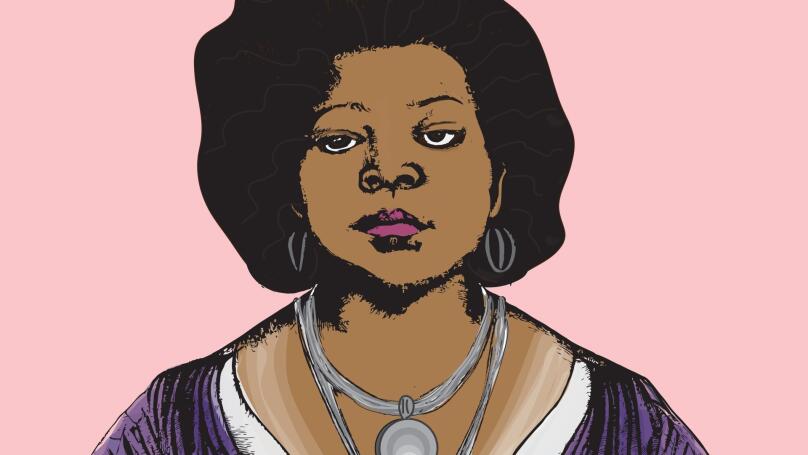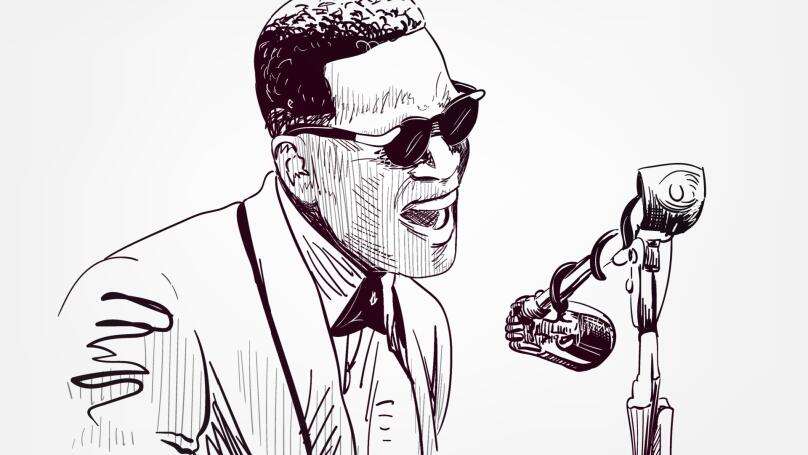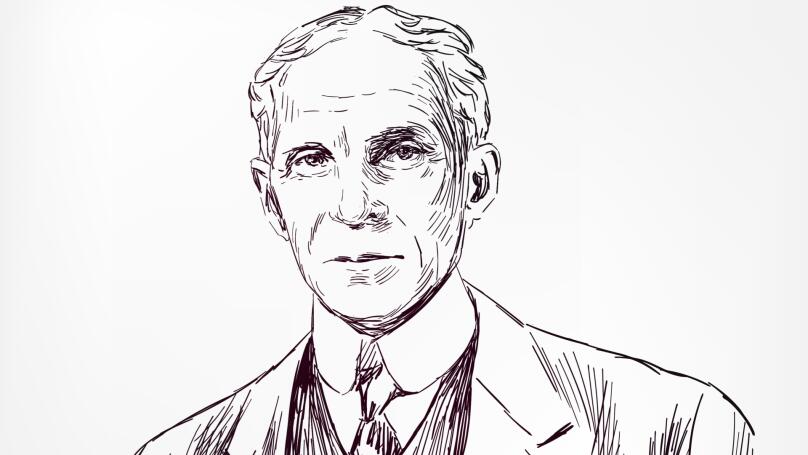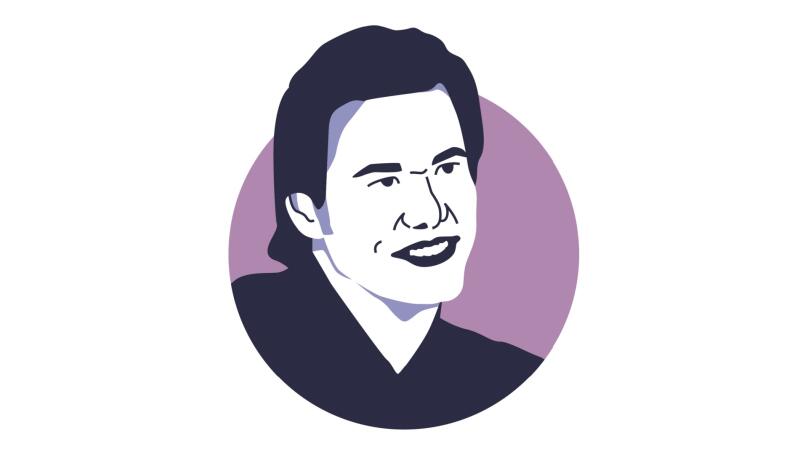Five Famous People Who Found Themselves in Difficult Circumstances but Changed Them
It's no news that most of us are born into the most ordinary families and must achieve everything independently.

However, some are even less fortunate: many famous and successful people started not just from the middle but from the bottom. Some were unlucky with their health, some were unlucky with their families, and some were born at a time when they could not even belong to themselves. Nevertheless, these people achieved their goals; today, everyone knows their names. Their example proves that there are no insurmountable circumstances under which you must bend - you can always surmount all obstacles. Let's tell you about five such people and their incredible but complex and tragic stories!
Sarah Breedlove, or Madam C.J. Walker: from the Daughter of an Enslaved People to the Owner of a Beauty Empire

Sarah Breedlove, better known as Madam C.J. Walker, was born into a family of enslaved people and years later entered the Guinness Book of World Records as the first woman to amass a multi-million dollar empire. She also became the employer of thousands of black women worldwide, saving entire families from hunger and poverty, but first things first.
Sarah was born in 1867 on a Louisiana plantation where her parents, along with Sarah's five siblings, were enslaved. Thanks to the Emancipation Proclamation, signed two years earlier, Sarah became the first child in the family to be officially born free. When the girl was only seven years old, her parents died, and her older sister, Louvenia, dominated Sarah's upbringing. However, her husband turned out to be a terrible tyrant: he often hit Sarah, and she immediately had to start working as a servant in rich houses to "do good." For this reason, Sarah never received any formal education - all her studies encompassed three months of attendance at Sunday school, where they studied mainly religion and choral singing.
At age fourteen, she decided to escape from the beatings and humiliation. Sarah got married. Four years later, she gave birth to her first child, and after another two years, she was left a widow with a young daughter in her arms, without any knowledge, money, or work. Sarah had to move to St. Louis to live with her older brothers, who worked as hairdressers, and took a job as a laundress for $1.50 a day. Even then, however, life continued to throw Sarah some unpleasant surprises: whether from stress or poor diet and lifestyle, she contracted alopecia and lost half of her hair! To save what was left, she turned to her hairdresser brothers for help. Those taught Sarah how to care for her hair and scalp properly, and from then on, she began experimenting with different masks and shampoos until she created formulas perfect for African-American women's hair texture.
Later, Sarah met entrepreneur Annie Malone (another successful African-American woman in the future whose life was very similar to Sarah's) and became her sales representative. Thanks to her new job, Sarah saved enough money to move to Denver and launch her own line of grooming products. A little later, Sarah successfully married Charles Walker, an extremely talented marketer who actively supported Sarah's business, becoming her sales agent.
To begin with, Madam C.J. Walker had to go cold-selling door to door, offering her products to home-makers. Two years later, she had enough money to buy a house and open her beauty parlour with a college where one could learn proper hair care and hairdressing. At that time, the Madam C. J. Walker Manufacturing Company had a factory with a science lab where she developed new cosmetic formulas and an entire school to train Sarah's future employees. In 1917, she employed more than twenty thousand women who could earn up to $15 a day (not a bad sum for those times). She even created funds to support the black population of the United States, building shelters and educational institutions. Thus, at the time of her death in 1919, Madam's fortune was estimated at $17 million in today's equivalent.
Ray Charles: the Blind Black Boy Who Became a Jazz Star

America in the 1930s was looking pretty bleak: Prohibition, the Great Depression, widespread unemployment, and amidst it all, a black population that continued to be persecuted and attacked by the Ku Klux Klan despite being officially emancipated. In the midst of it all, Ray Charles Robinson was born, and by the end of his life, he had won seventeen Grammy Awards and recorded seventy albums. However, it all started with a low-income family in the small town of Albany, where his father was a labourer and his mother was a laundress.
After Ray had a younger brother, George, the family was forced to move to the village of Greenville in Florida. Unfortunately, his father found himself the victim of scammers several times and was left without payment for his work, because of which he was eventually forced to go on long-term labour. Subsequently, his father abandoned his family, and Ray's mother was left alone with her two sons. Later, Ray Charles, in an interview, said that "even among other blacks, we were on the bottom rung. Below us was only the earth."
While their mother washed other people's laundry for fifteen hours daily, little Ray and George loitered idly around Greenville. One day, Ray wandered into a local bar where a giant grand piano stood on a small stage. The five-year-old boy couldn't resist, went over and started pressing the white keys until the old pianist Wiley came running in. But it was too late: Ray was already so mesmerised by the sounds of the piano that from then on, he kept stopping by the old bar to tickle the ivory, and Wiley became his music teacher. Ray quickly learnt to play a few tunes, although he could not read or write.
The conditions in which Ray lived were already super challenging, but after a few years, they became even worse. His younger brother George drowned in a tub of laundry water during one of their childhood games. Because of the severe stress and deteriorating relationship with his mother (she blamed Ray for the incident), the boy developed glaucoma. Thus, already in childhood, he became completely blind in both eyes. A black blind boy discriminated against African Americans - what could be worse? Ray caused pity in others, and his mother did not like it because she did not want her son to get used to counting on other people's help. Eventually, she stopped dressing him herself, walking him and helping him - Ray cried but learnt to do everything in life on his own. He fell and got lost a lot, but eventually, he even learnt to walk the streets of Greenville on his own. So he returned to the old pianist's bar and continued his studies despite his blindness - learning music literally by feel.
Soon, Ray was sent to a boarding school for blind and deaf children, where he learnt to read Braille, enrolled in a music class, and continued to hone his talent. The boy definitely had a gift: Ray could not see, so he honed a phenomenal memory to play by ear and could quickly reproduce any melody he heard. He also loved to play chess, and his creativity, mathematical mind, and logic enabled him to learn to play as well as sighted musicians.
A few years later, Ray's grandmother died, and another year later, his mother died, and the boy had nowhere to go home for the summer. The same pianist, Wiley, started caring for him outside the boarding school. When he was gone, too, Ray was left all alone. He was only sixteen when, in 1947, he took a train to Seattle and entered one of the bars to find a job as a pianist. The bar owner chuckled at him and laughed at his aspirations for a long time, but still allowed him to sit at the piano and show what Ray could do. That's how he found his first job, and years later, he settled in Los Angeles and became a blues star and idol of millions of Americans. In 2004, the story of Ray Charles was eponymously titled "Ray" and went on to win an Oscar.
Henry Ford: a Simple Farmer Who Became a Brilliant Inventor of Automobiles

In childhood, legendary inventor and owner of automobile production, Henry Ford, differed from other children in that he always made his own choices. He was the firstborn son of a large family of Irish immigrants who maintained a farm in the suburbs of Detroit. Henry could not tolerate the farm labour his father persistently accustomed him to but became actively interested in mechanics after he gave him his first pocket watch. As a teenager, Henry kept himself busy taking them apart and putting them back together. At the tender age of thirteen, he opened a small watch repair shop in the neighbourhood, which his father was unhappy about. After his mother's death, their relationship only worsened, and Henry had no choice but to run away from home at the age of fifteen to follow his own path. The young man went to Detroit to get "production practice" in factories but soon returned home: his father promised him a 40-acre plot of land for his return, and Henry also had a girl, Clara, waiting for him, with whom he was head over heels in love. They married in 1888, and Henry began farming after all, submitting to his father's will.
However, Henry still found a way to do what he loved: he focused on designing various mechanisms for the needs of the farm. Thus, Ford invented a steam tractor, but he did not like the large size and heaviness of the equipment. Henry searched for alternatives for a long time and looked at electric traction. Still, laying electric lines was too expensive for an ordinary farmer, so Henry settled on a conventional petrol motor. He also invented a grain thresher and sold the patent to Thomas Edison, who later, in 1891, invited him to work for his company.
Two years later, Henry Ford became his chief engineer, although he did not even have a higher education. On his salary, Henry continued to develop a self-propelled carriage using the same petrol engine, and in 1896, the Ford Quadricycle - his first working car - was officially patented. True, it looked more like a bicycle at the time and didn't have the look we're used to, but it revolutionised engineering. Ford stopped working for Edison to develop further in this direction, so, with the assistance of Detroit magnate William Murphy, a pilot Detroit Automobile Company was established, with Henry Ford as its manager.
Alas, this plant did not last long: it only manufactured twenty cars, and those were criticised for low quality at an extremely high price. As a result, the plant quickly went bankrupt. However, at the same time, Ford managed to get acquainted with a professional engineer, Harold Wills, who was good at reading and making drawings, unlike Ford. Consequently, a more successful version of the car appeared, attracting investors, so the legendary Henry Ford Company and no less legendary brand of automobiles appeared. Today, the Ford Company is valued at more than $100 billion! To this day, it is still run by his descendants.
Guy Laliberté: From Street Performer to the Owner of the World's Most Iconic Circus

Guy Laliberté's story is not as famous as those of three previous personalities, but it's impressive nonetheless. You probably know about the famous Cirque du Soleil circus and maybe even attended its shows personally. It employs over 4,000 people and generates over $600 million in annual revenue. Today, Cirque du Soleil tours all over the world, but once upon a time, it all started with one smiling enthusiast.
Guy Laliberté was born in Canada to an average family of a nurse and a public relations manager. His parents were not poor, so from childhood, they took their son to various fairs, amusement parks and shows. Thus, Guy's love for the circus was ignited in childhood when he visited with his parents the Ringling Brothers, Barnum and Bailey travelling show (which existed for 146 years and went bankrupt in 2017). From that moment on, the boy decided to participate in these colourful, magnificent and memorable shows. In high school, he began to create his own creative acts, performed at city events and mastered the harmonica and accordion in parallel. However, after graduating from high school, Guy entered not a circus school, as he had always dreamed, but a law school in Quebec. However, it did not last long: Guy quickly dropped out of school and began working on the streets.
Guy Laliberté walked the squares as a travelling artiste and juggled balls to music. His earnings were only meagre voluntary donations until a small troupe called Les Echassiers spotted Guy on one of the streets. It consisted of jugglers, acrobats, fire swallowers, and musicians. Together, they toured the world with theatrical shows, and Guy joined them. It took him to many European countries, but money was always in short supply, and eventually, the troupe broke up, and Guy had to return home. He even tried to find a "stable job" and get a job at a hydroelectric power station, but after three days, there was a labour strike, and Guy was fired along with all the employees. So, at age twenty, Guy returned to the life of an itinerant artiste.
However, soon, he met a new acquaintance - Laliberté was again noticed on the street and invited to the troupe of stilt walkers called Club des Talons Hauts ("High Heels Club"). Three winters in a row after that, Guy lived and performed in Hawaii, and there it is rumoured that he got the idea to organise his own Cirque du Soleil - "Circus of the Sun." Upon his return to Quebec, Guy set about realising his dream. He began to gather his troupe of travelling artists like himself and on pretty peculiar conditions. Since Guy had no money, he paid the artists with sandwiches, but they could take all the money that people threw into their hats during the performance.
Of course, this troupe was a long way from a full circus. Guy later founded the genuine Cirque du Soleil with his friend Daniel Gauthier, who had already graduated from the business college and owned his own consulting firm. With another friend, Gilles Ste-Croix, they requested funding from the government, and to prove their seriousness, Gilles had to walk 90 kilometres from Baie-Saint-Paul to Quebec City on giant stilts. In the end, Cirque du Soleil gathered as many as seventy artists, set up a marquee and gave its first performance at the city fair with tickets for just $1. As many as eight hundred people came - and it was a smashing success, launching an entire Cirque du Soleil entertainment empire.
Lectera’s Online Courses by topic
Jim Carrey: the Funniest Actor with a Solemn Destiny

Who today doesn't know Jim Carrey, a talented comedian, brilliant actor and simply a kind-hearted man? Moreover, at the beginning, Jim's life was against him and his endeavours. Carrey was born into a relatively low-income family, where his father was this "classic loser": he worked a lot as an accountant, but for pennies, and his parents did not have enough money even to pay for a small flat, where they lived together with four children. When Jim was still in ninth grade, his father got laid off, and the whole family had to move into a caravan and then into a street tent when they had to sell that too. As a kid, Jim believed they were just going on a fun camping trip. He dropped out of school with his brother and two sisters to help support the family: his father worked as a night watchman in a factory, his mother worked as a cleaner, and the children scrubbed floors and toilets.
However, Jim Carrey never stopped dreaming and developing his acting talent despite his difficult childhood. Back at school, Jim often disrupted teachers' lessons because of his hyperactivity, and some teachers made a deal with him: if he sat through the entire lesson calmly, then at the end, they would give him five to ten minutes so that he could speak in front of the class. At age ten, Jim wrote a letter to the television programme "The Carol Burnett Show," where guests showed off their comedy or theatrical talents. However, there was a negative response because Jim was too young to participate. At fifteen, he decided to try again as a stage comedian. With his father, he set a performance in one famous club, which failed: the audience yawned, and even the club owner said backstage that it was terribly dull. Disappointed, Jim forgot about his dream of becoming an actor for two years.
Jim began to perform in public again at nineteen years old, but this time quite successfully. He got a job at Litrais Spivak's club in Los Angeles and, since 1981, began to fill the hall with packed audiences. People went to the club just to watch Carrey's performances. Believing in his talent, he moved to a more famous club, "Comedy Store," where he met the American comedian Rodney Dangerfield, who later greatly influenced Carrey's skills and work. Later, Jim got invited to the television project "The Duck Factory," where Jim, dazzled by the prospects, moved the whole family to Los Angeles. However, the show lasted only a few weeks and closed. Jim lost his job and fell into depression for two whole years, completely disappearing from all radars until he started going to auditions. In 1983, he starred in his first film projects; in 1994, the film "Ace Ventura: Pet Detective" starring Jim came out. It began a whole new, successful era for him and propelled him to stardom!
Of course, this is only a tiny part of those who could change circumstances to suit themselves and refused to give up! The examples of Oprah Winfrey, Joanne Rowling, Stephen Hawking and many others are equally inspiring. All these people came to success in very different ways, at different ages and in different niches, but they all have one thing in common: they were able to adapt to turn events in their favour at the right moment. Of course, they could do it without unsuccessful attempts and titanic labour! So you can, too, especially with the opportunity to develop soft skills easily and quickly, learning just fifteen minutes a day with Lectera.
Share this with your friends via:
Latest News

A significant stage in the development of the alternative education system has begun in West Northamptonshire in the UK: the County Council is actively calling on parents, guardians, and trustees to participate in shaping the future of this key area.

Outwoods Primary School in Atherstone, Warwickshire, having experienced deep sadness after the loss of their famous cat, Silla, has found solace in a new pet – a Maine Coon named Aloysius O’Hara.

In modern universities, artificial intelligence, and in particular ChatGPT, is rapidly transforming from a controversial tool into a full-fledged student assistant.

An innovative educational project is gaining momentum in UK primary schools, aiming to change attitudes towards video games.

The Massachusetts Institute of Technology (MIT) presents MIT Learn – a revolutionary online platform that opens a “new front door” to access university knowledge and resources.












 Mental Traps That Are Easiest to Fall Into During Winter
Mental Traps That Are Easiest to Fall Into During Winter
 Life After the Holidays: How to Beat the Post-New Year Blues
Life After the Holidays: How to Beat the Post-New Year Blues
 Which Christmas Movie Character Are You?
Which Christmas Movie Character Are You?
 Test. What Career Goal Should You Set for Next Year?
Test. What Career Goal Should You Set for Next Year?
 Your New Year’s Forecast: What Awaits You in the New Year?
Your New Year’s Forecast: What Awaits You in the New Year?
 Test. Which New Year Archetype Are You?
Test. Which New Year Archetype Are You?
